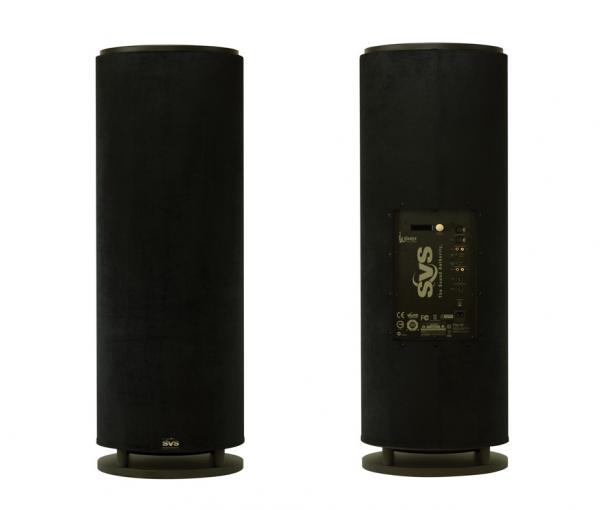Test Report: SVS PC-13 Ultra Subwoofer

Tube-shaped subs are popular with DIY-ers because they’re easy to construct. Just grab a cylindrical concrete form at Home Depot, slap some ends?on it, and you’ve got a nice subwoofer enclosure. But SVS features tube-shaped subs in its line not because they’re easy to build; it’s because the form factor makes them perfect for certain rooms. At 16.6 inches in diameter, the company’s PC-13 Ultra takes up less than half the floor space of its comparable box-shaped sub, the PB-13 Ultra. A PC-13 Ultra can slip almost unnoticed into a corner, while the PB-13 Ultra can slip unnoticed into... well, maybe an aircraft hangar.
The end of the PC-13 Ultra that sits on the floor contains a 13-inch driver so beefed up that it seems like it came off a super-weapon designed to battle the Incredible Hulk. The other end has three ports. SVS includes three foam plugs that you can use to plug one port or all three (or none). A heavy metal grille covers the ports, but it pops off easily for port tweaking.
That big driver is powered by the company’s Sledge STA-1000D amplifier, basically the same 1,000-watt Class D amp found in the SB13-Plus I reviewed in the June/July/August 2011 issue of S+V (read it here). The software is slightly different, though. SVS added three tuning modes: sealed (for all ports plugged), 16 Hz (one port plugged), and 20 Hz (all ports open).
The digital signal processor (DSP) built into the Sledge also provides all sorts of setup and tuning options. Most important is the two-band parametric EQ, which can fix your room’s worst acoustical problems. In my opinion, every serious subwoofer should have this feature. The dual EQs let you choose from 13 center frequencies ranging from 31 to 125 Hz; a boost/ cut range of +3/–12 dB; and a Q (bandwidth) range of 2.0 to 14.4 (or 0.7 to 0.1 octave).
Almost no stereo preamps include subwoofer crossovers, but that’s no problem for PC-13 Ultra owners. The DSP provides a complete crossover, with high- and low-pass filters with adjustable frequency (31 to 125 Hz) and slope (12 or 24 dB/octave). There’s also room-gain compensation, intended to tame overwhelming deep bass. Not only is there a phase control adjustable in 15° increments, but there’s also a delay control for the subwoofer that lets you sync it perfectly with the main speakers.
After my awesome experience with the SB-13 Ultra, I wondered if the advantages of the PC-13 Ultra’s larger enclosure and ported design would yield any noticeable improvement. Let’s find out.




























































